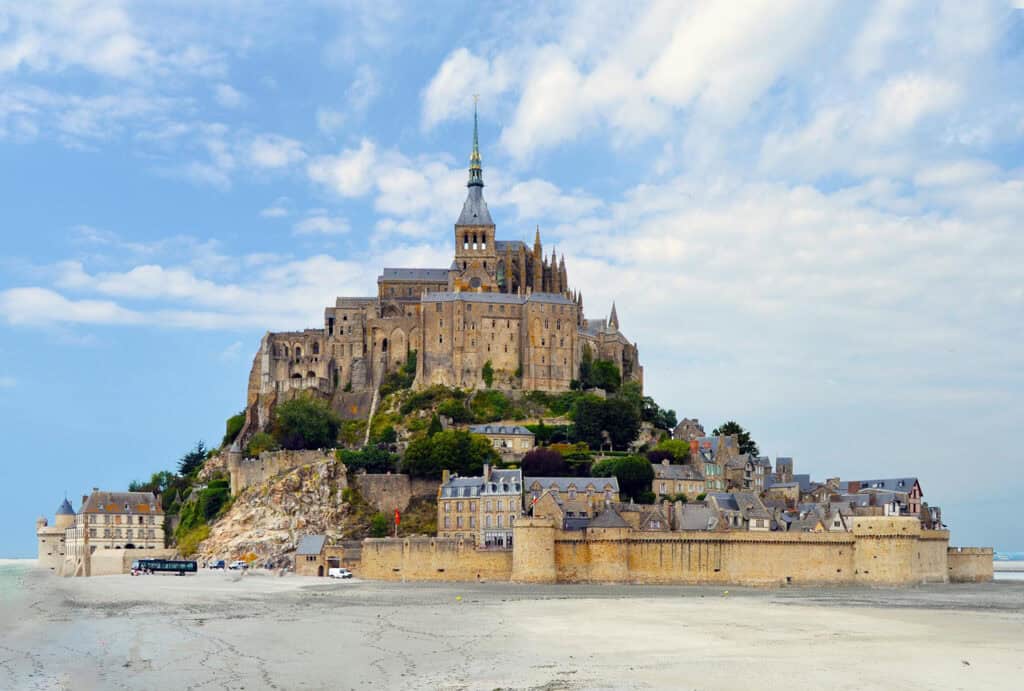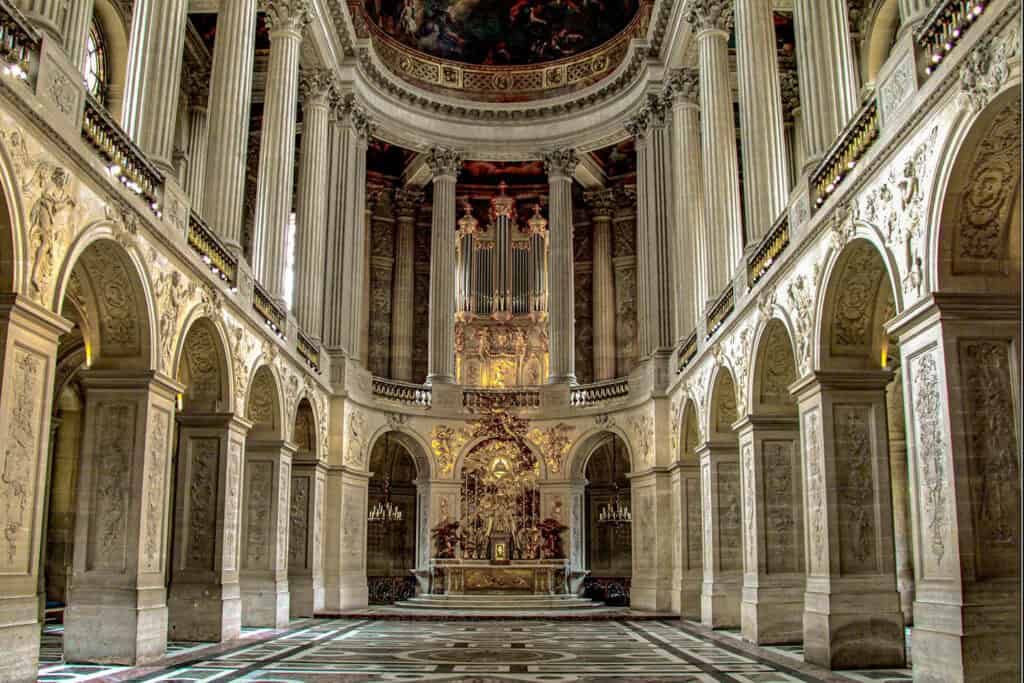


Have you ever dreamed of walking through a city where every corner tells a story of grandeur and innovation? Are you fascinated by the French architecture and eager to explore the rich heritage of it’s landmarks?
For those who cherish the beauty of architecture, France offers a treasure trove of stunning structures that reflect its rich cultural and historical heritage. At Landmarks Architects, we recognize the awe and curiosity that France’s architectural wonders inspire.
In this article, we will cover:
- Iconic French architectural landmarks
- Ancient and medieval architecture
- Renaissance and Baroque masterpieces
- Neoclassical and modern marvels
Ready to explore through France’s architectural history?

Iconic French Architectural Landmarks
Eiffel Tower

The Eiffel Tower, a masterpiece designed by Gustave Eiffel, stands as an iconic symbol of France and is a highlight among the best cities for architecture.
Completed in 1889 and soaring to a height of 1,062 feet, it held the title of the tallest building in the world until the Chrysler Building was completed in New York City.
Notre-Dame Cathedral

Notre-Dame Cathedral, located on the Île de la Cité, is a quintessential example of French Gothic architecture. Construction began in 1163 and continued for over two centuries.
Louvre Museum

The Louvre Museum, originally a royal palace, is now the world’s largest art museum, established in the late 12th century. The museum houses an extensive collection of art, including masterpieces by Leonardo da Vinci and the Venus de Milo.
Palace of Versailles

The Palace of Versailles, a masterpiece commissioned by Louis XIV, embodies the grandeur of French Baroque architecture. The palace is famous for its extensive gardens, Hall of Mirrors, and lavish interiors that display intricate detail and decorative arts.
See also: Famous Architecture in Italy: 22 Iconic Buildings You Must See
Ancient and Medieval Architecture
1. Notre-Dame de Paris

Notre-Dame de Paris is a masterpiece of French Gothic architecture, known for its intricate facade and stunning stained glass. Construction began in 1163 and lasted until 1345.
With its flying buttresses, pointed arches, and stunning stained glass windows, the cathedral represents centuries of artistic achievement.

It has survived numerous historical events, including the French Revolution and the First World War, making it a symbol of resilience and heritage in France.
2. Pont du Gard

The Pont du Gard is an aqueduct bridge built in the first century A.D. during the Roman Empire. This UNESCO World Heritage site exemplifies Roman engineering prowess with its three-tiered arches rising 48.8 meters above the river.
Its impressive design reflects the ingenuity and durability synonymous with Roman architecture.
3. Mont Saint-Michel

Mont Saint-Michel is a small island crowned by a medieval abbey. This site, also a UNESCO World Heritage site, showcases a unique blend of Gothic and Romanesque architecture.

The abbey dates back to the 8th century and features a bell tower that soars above the surrounding structures. Accessible during low tide, the island is renowned for its tidal variations, which contribute to its fairy-tale appearance.
Renaissance and Baroque Architecture
4. Louvre Museum

The museum houses a diverse collection of art. Its Renaissance origins date back to the late 12th century, showcasing features such as symmetry and proportion.
The addition of modern elements, like the glass pyramid entrance designed by architect I. M. Pei, represents a harmonious blend of historical and contemporary design, making it a premier art museum.
Spanning diverse periods and styles, the Louvre reflects France’s cultural and artistic evolution.
5. Palace of Versailles

The Palace of Versailles was the royal residence under Louis XIV, known for its opulence and grandeur. Located just outside Paris, it showcases Baroque architecture and beautiful gardens that exemplify the wealth of the French monarchy.

The Hall of Mirrors, adorned with chandeliers and elaborate décor, is particularly famous. The gardens are meticulously landscaped, offering a serene escape and a glimpse into royal life during the reign of Louis XIV.
Neoclassical Architecture
6. Panthéon

The Panthéon in Paris, designed by Jacques-Germain Soufflot, exemplifies neoclassical architecture. Construction began in 1758 and finished in 1790. Initially intended as a church, it now serves as a mausoleum for distinguished French citizens.

The building features a striking dome that dominates the skyline. Impressive Corinthian columns adorn its facade, embodying classical elements. The interior boasts intricate frescoes and marble floors, reflecting France’s rich cultural heritage.
Modern and Contemporary Architecture
7. Eiffel Tower

The Eiffel Tower, designed by Gustave Eiffel, is one of the most globally recognized architectural landmarks of modern architecture. The tower’s unique design, originally met with skepticism, has become a celebrated marvel and a vital part of Paris’s skyline.
Its innovative use of wrought iron revolutionized engineering, allowing for lighter and more resilient designs. This iron lattice tower features three levels accessible to the public, offering breathtaking views of Paris.
8. Villa Savoye

Villa Savoye, designed by Le Corbusier, is an emblem of modern architectural styles. Completed in 1931, this residential building embodies the principles of functionalism and simplicity.

Le Corbusier’s design features an open floor plan, pilotis (supports), and a flat roof terrace. The villa exemplifies the “five points” of modern architecture, focusing on harmony between humans and their environment.
See also: Famous Architecture in Greece: 15 Iconic Structures to Discover
Famous Architecture in France: A Recap

France’s famous architecture reflects its rich history, European style architecture, cultural heritage, and artistic innovation. From the grandeur of the Eiffel Tower to the intricate details of Gothic cathedrals like Notre-Dame, each structure tells a unique story.
The blend of classic and modern designs showcases France’s commitment to preserving its architectural legacy while embracing contemporary trends.
Exploring these iconic landmarks offers a tour into the country’s evolution and continues to inspire architects and enthusiasts around the world.










